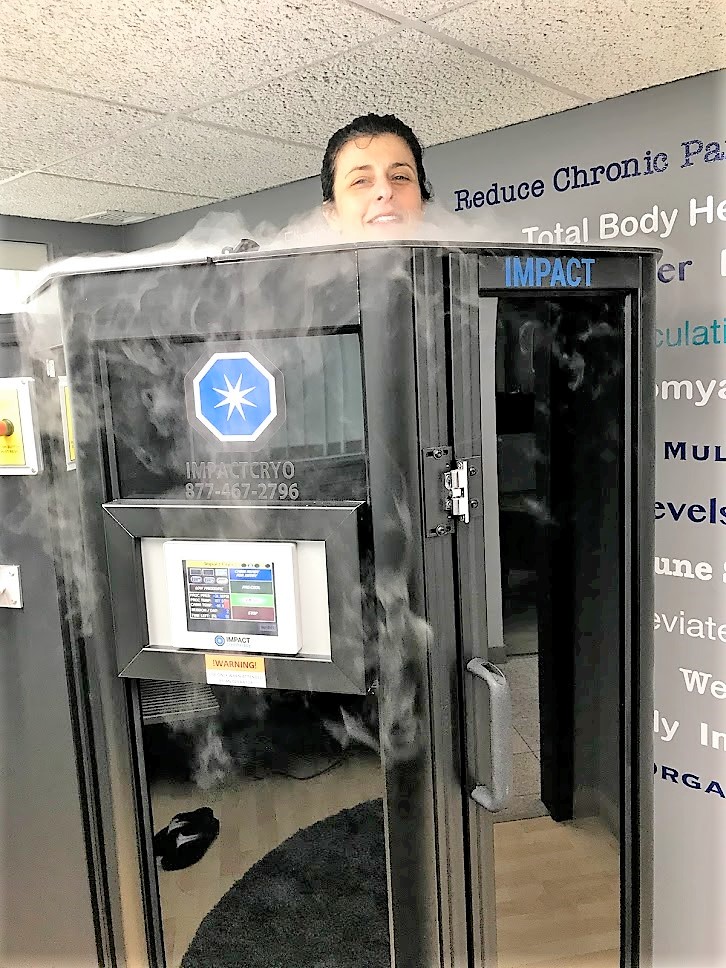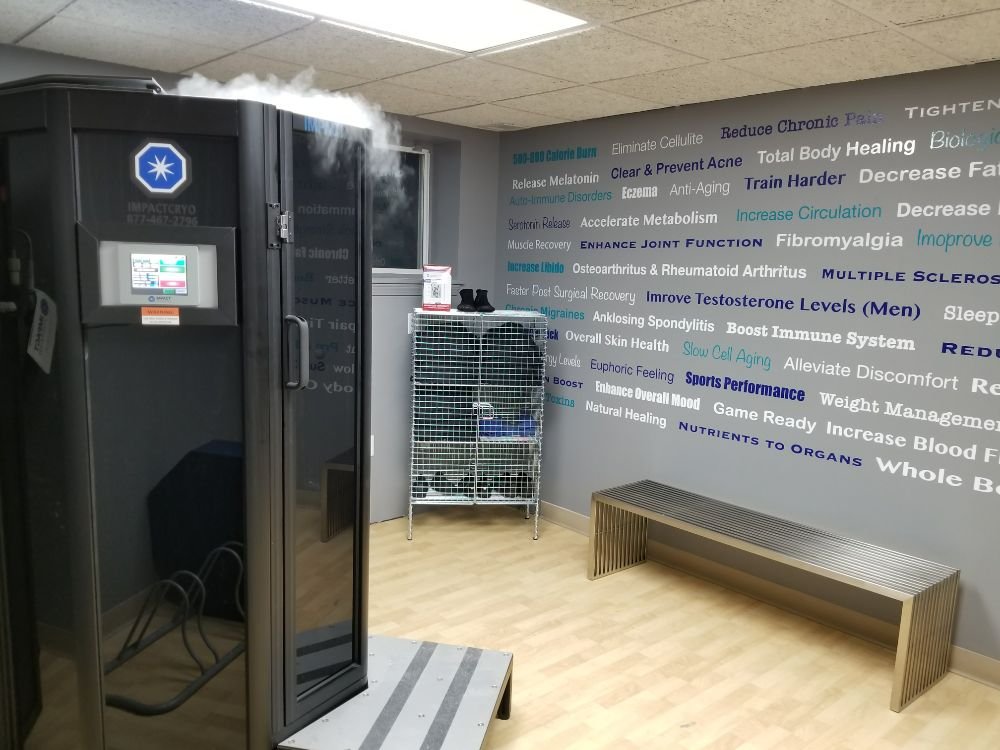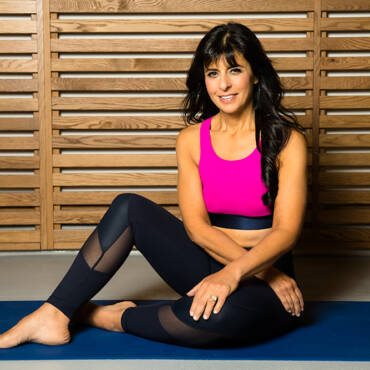Do you ever have those days where you feel like the warranty on your entire body has expired? Lately, that’s exactly how I’ve been feeling. I’m tired, my back hurts and, whether it’s a tough workout, a long day at work, or one too many glasses of wine on a night out, recovering is slow going. In an effort to recharge my batteries, I decided that maybe it was time to think out of the box, or at least a bit out of my comfort zone. As it turns out, I was rewarded for my bravery!
I had heard a lot of buzz about the myriad of benefits of cryotherapy and float or “sensory deprivation” tanks, so I thought I’d look into it. Apparently, there’s some scientific studies that show evidence that an hour in a float tank is the equivalent of several hours of deep REM sleep and can be helpful with insomnia. Keeping in mind that I haven’t felt as if I’ve had REM sleep in over a decade, I was intrigued. Other studies indicate float therapy can be helpful with anxiety, stress, and pain relief. While my interest was piqued, I was not altogether comfortable with trying to get comfortable. I’m not the adventurous type by nature and the thought of floating in a closed, dark space and subjecting myself to temperatures of minus 200 degrees Fahrenheit, had me a trifle nervous. However, I decided to literally take the plunge!

My first goal was to find a reputable and experienced spa that offered these types of services. After some research into several establishments in my area, I met with Valerie Vest, owner of InBody in Arlington, Massachusetts. When I learned more about the float therapy, which involves laying there for an hour, I wondered how I’d manage because I get antsy just waiting for my nail polish to dry and thinking of all the other things I could (and should) be doing. That very thought is what sealed the deal for me, as it became crystal clear that I needed to find a way to relax. I had a million questions for Valerie: What do I wear? What does the tank look like? Can I drown? Do I have to close the door? Considering that I once got stuck in a mall elevator and ever since always opt to take the stairs and I also went out of my way to get an open MRI test out of fear of being in closed “tube”, I was nervous that I would be getting into a claustrophobic situation in a float tank.
I was pleasantly surprised by the size of the float tank. I’m not exactly sure what I pictured, but InBody’s float tank was much larger than I had envisioned and with a higher ceiling. I had seen photos of some tanks that were more closed in and pod-like. This was more like stepping into a large, enclosed hot tub. The science behind float therapy is called Restrictive Environmental Stimulation Technique, or R.E.S.T. for short I was instructed to take a shower with some special soap to remove oils in my hair and on my skin, and I was told not to wear anything in the tank, much like you would if you were soaking in a tub. There were three buttons inside the tank: one for the lights, one for music, and one to reach the front desk if I needed anything. The door opened from the inside, so I could exit at any time.

There were a few caveats before floating. There was the standard requirement to discuss any concerns you might have with your physician before beginning this or any other wellness or exercise program, particularly if you suffer from vertigo, tinnitus, various skin disorders, or a few other medical issues. Float therapy was also not conducive if you’ve had a recent spray tan or have colored your hair within a few days of floating (hair extensions or recently Keratin treated hair were also not recommended). I was also advised not to shave just prior to floating and to avoid getting the water in my eyes, as due to the very high salt concentration of the water, it would sting. For the first half of my inaugural float, I opted for the soothing, colored, low lighting option along with soft, new-age music. I had to wear earplugs to avoid water getting in my ears, which made the music even fainter. Both the water and the air temperature in the tank was warm and comfortable.
Valerie explained that the tank is filled with ten inches of water containing dissolved Epsom salt, creating the zero-gravity environment. While it’s possible to drown in any body of water, the float tanks have such a high concentration of salt it is almost impossible to sink and it would require a deliberate effort to move to a position on your side or face down. She also informed me that most people have a little trouble trusting that they would float and felt they had to hold their neck up a bit. She proved correct, as it took me a few minutes to realize that there was no need to do so. Much to my surprise, I didn’t have to coach myself to calm down and relax. It was incredibly soothing. I just drifted off to a far away place. My mind was calm and my body felt weightless. The experience of floating and not feeling pain in my back or neck was very welcome. To my astonishment, I was not rattling off my daily to-do list in my head as I floated.
The science behind the float tanks showed a range of benefits that include reducing anxiety and depression, pain relief, solving sleep issues, decreasing blood pressure, increasing circulation, improving concentration and enhancing athletic performance. After I felt completely relaxed, and for the following two sessions, I shut the lights and music off and just enjoyed something I don’t often get in my everyday life…blissful, quiet solitude. It was a peaceful, stress-free and calming experience and I was surprised at how relaxed I had become by the time the voice gently said, “Welcome back,” signaling that my hour in the tank had elapsed. I exited the tank, took a shower to rinse off any salt residue, and felt well and very centered. While the cost of floating can vary by spa, InBody charged $70.00 per single session or introductory packages of three were offered for $150.00.

Admittedly, I was a bit more anxious about the cryotherapy. The thought of being subjected to sub-zero temperatures didn’t sound like a traditional, relaxing spa treatment. As I mentioned, I had been feeling particularly run-down, so I boldly ventured forth to learn more. Valerie explained that the cold was more like a dry cold. She also explained that I would put on special socks, gloves and shoes to protect my extremities. Valerie would remain with me throughout the three-minute cold therapy treatment. Much to my relief, the door also opens from the inside so I could exit at any time, which alleviated some of my initial fears.
As with the float therapy, besides discussing specific concerns with your doctor beforehand, there is also a list of people who should avoid partaking in cryotherapy, including people under 18, those who are pregnant, and people with heart disease or Raynaud’s Syndrome, as well as some other specific medical conditions. What I found most interesting is that the cryotherapy tank tricks your body into feeling cold and triggering the body’s own healing responses. Whole-body cryotherapy is touted as reducing chronic inflammation and chronic fatigue, improving muscle recovery, decreasing pain, and a host of other potential benefits, including improving skin appearance and the effects of aging, increasing collagen production, and boosting metabolism. The frosting on the cake may be the claim that cryotherapy burns 500-800 calories in a three-minute treatment.
I stepped onto the platform and asked Valerie if she would chat me up to help the time go by quickly. I also decided to try to jog in place a bit to distract myself and perhaps lessen the sense of being so cold. What impressed me the most was how quickly time passed. I was prepared for the session to seem like an eternity, when I finally asked how much longer I had, I was pleasantly surprised when Valerie said, “Only 50 seconds left.” It was certainly cold, and I was ready to exit when the three minutes expired, but I was relieved by how tolerable the experience was. When I stepped out of the chamber, I felt invigorated and experienced a huge rush of adrenaline. I also felt better. Imagine the relief from soaking your sore feet in an ice bath. It wasn’t painful in anyway and it offered some instantaneous positive responses.

As I did with the float tank, I used the InBody cryotherapy chamber three times and each time I felt better than I had in quite a while. As someone who has experienced chronic back pain, I found myself really looking forward to the next cryotherapy session. The most recent appointment followed a grueling work weekend in which I put in 32 hours standing on my feet over two days and I couldn’t have timed the treatment any better to help my body recover. Again, while costs may vary among different spa locations, the cost for cryotherapy treatments at InBody was $65.00 per session or again introductory packages of three were offered for $150.00.
In the end, I was surprised at how much better I felt after my series of floating and cold therapy sessions. In addition to the host of potential benefits from both, for someone like me, who usually the adventurous, thrill-seeker type, I also felt a sense of pride that came from trying these nonconventional methods of therapy. The experiences left me feeling as though I had extended my body’s warranty and I was chill with that
FBJ in the Cryotank: How to Chill!
Here's some live footage of me in the cryotherapy tank at InBody in Arlington, MA at learning how to chill at -200 degrees! Stay tuned for my upcoming article about cryotherapy and float tank therapy coming soon to Women Fitness! A few of you asked about trying it, so if you're local to InBody, here's a link to use: http://frd3.co/1QuptC
Posted by FBJ Fit on Sunday, June 30, 2019




